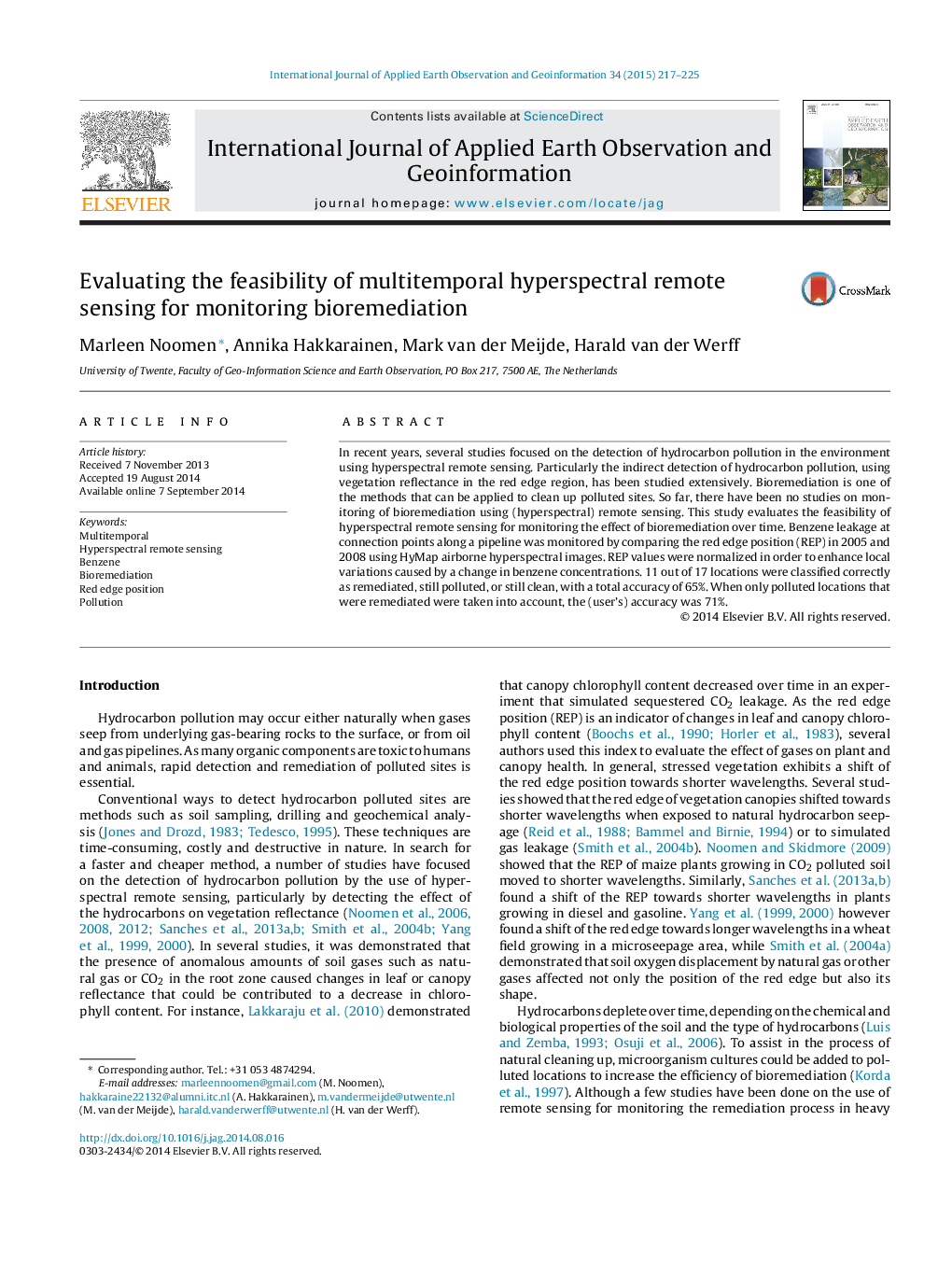| Article ID | Journal | Published Year | Pages | File Type |
|---|---|---|---|---|
| 6348754 | International Journal of Applied Earth Observation and Geoinformation | 2015 | 9 Pages |
Abstract
In recent years, several studies focused on the detection of hydrocarbon pollution in the environment using hyperspectral remote sensing. Particularly the indirect detection of hydrocarbon pollution, using vegetation reflectance in the red edge region, has been studied extensively. Bioremediation is one of the methods that can be applied to clean up polluted sites. So far, there have been no studies on monitoring of bioremediation using (hyperspectral) remote sensing. This study evaluates the feasibility of hyperspectral remote sensing for monitoring the effect of bioremediation over time. Benzene leakage at connection points along a pipeline was monitored by comparing the red edge position (REP) in 2005 and 2008 using HyMap airborne hyperspectral images. REP values were normalized in order to enhance local variations caused by a change in benzene concentrations. 11 out of 17 locations were classified correctly as remediated, still polluted, or still clean, with a total accuracy of 65%. When only polluted locations that were remediated were taken into account, the (user's) accuracy was 71%.
Related Topics
Physical Sciences and Engineering
Earth and Planetary Sciences
Computers in Earth Sciences
Authors
Marleen Noomen, Annika Hakkarainen, Mark van der Meijde, Harald van der Werff,
